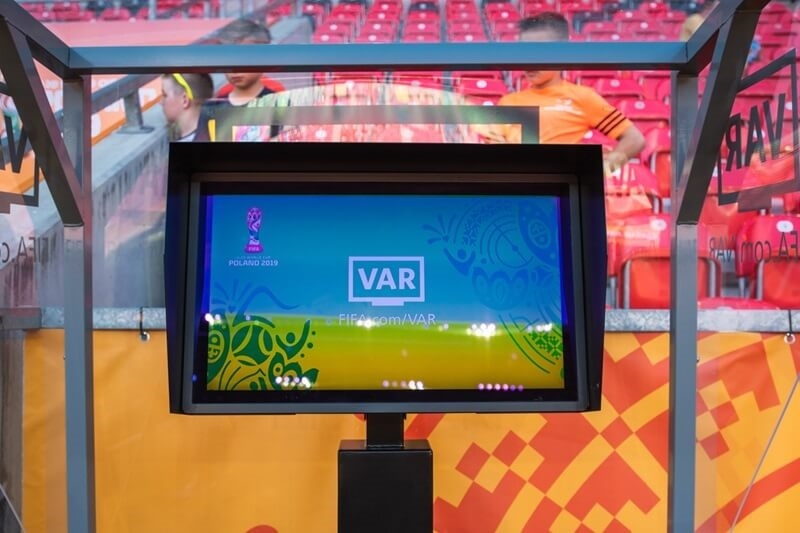
Close
The VAR system has changed the way football feels. It’s not just about goals or red cards anymore. It’s about the moments that decide everything. In FVS football, this new form of video support is being used to help referees see the everything clearly. It is a fair development in the game, even though it sometimes slows the pace of the game.
The VAR meaning is simple—it stands for Video Assistant Referee. It’s there to help referees make better decisions. The VAR system watches every move with cameras, checking things that the human eye might miss.
It started with one goal: to reduce mistakes. And slowly, it became a big part of football itself. Referees still make the final call, but now they have help from screens, replays, and another team watching behind the scenes.
When a foul, offside, or penalty happens, the VAR team reviews it. If they see something unclear, they contact the referee through an earpiece. The referee can look at the replay and decide again. Sometimes it confirms what everyone saw. Sometimes it surprises everyone. But either way, the introduction VAR has added an extra layer of accuracy to the game.

Video support sounds complex, but in truth, it’s straightforward. During every match, many cameras record from different angles. When there’s a doubt, the video team checks all angles and replays them. The referee listens to their input and decides whether to pause or continue.
In FVS football, the system is being tested at youth tournaments. The reason is simple—young players should learn early that fair play matters. It’s teaching them that honesty in sports goes hand in hand with technology.
Still, not everyone loves it. Some fans say VAR slows things down, that it kills the flow. Others think it saves the game from bad mistakes. Both views are true in their own way. That’s what makes VAR interesting—it’s not perfect, but it’s trying to be.
Inside the VAR system, there are people working quietly while the game continues. Each one has a role to make sure decisions are fair.
Together, they form a small team that works behind the curtain. The VAR has not been introduced to take the control away from referees, but to support them when moments get too close to call.
Bringing the Video Assistant Referee system into FVS football is an experiment, but a meaningful one. It shows that even at the youth level, football is preparing for a future where technology and fairness live side by side.
For young players, this is a lesson. It’s not just about scoring goals or winning games—it’s about understanding responsibility. Every move is watched. Every foul can be checked. It builds discipline. It builds respect.
And in youth games, VAR is kept simple. The process is shorter and less detailed but still useful. It keeps the energy of football alive while still guiding players and referees toward accuracy. What’s learned here will shape the next generation of players and officials.
The VAR system is only called into action in specific situations—moments that can change everything.
Checks for fouls, offsides, or handballs before the goal.
Makes sure the foul really happened inside the box.
Reviews if a challenge deserves a sending-off.
Confirms that the right player is penalized.
These checks don’t happen all the time, only when there’s real doubt. The biggest impact of VAR is that it slows the game for a few moments, but they also prevents years of debate about one wrong call.
Football is emotion. It’s the sudden shout, the rush, the celebration. And VAR, in many ways, changes how those moments feel.
Now, when a goal is scored, players wait. Fans hold their breath. The stadium goes quiet, eyes fixed on a screen. Sometimes the goal stands. Sometimes it doesn’t. That pause, those seconds—they’re full of tension.
For referees, the VAR system helps, but it also adds pressure. Every decision they make is now reviewed. For players, it’s a double-edged sword. It protects them from unfair calls but can also take away their best moments.
Yet, despite all that, it’s a step forward. Football is learning to be more precise. It’s learning that truth, even delayed truth, matters more than speed.
The purpose of VAR is to make the game fair and reduce errors that referees sometimes make.
Each of these points shows how VAR is not just technology—it’s part of football’s evolution.
The long-term VAR meaning is about more than catching mistakes. It’s about teaching football how to evolve. The technology doesn’t remove emotion—it reshapes it.
The experiments in FVS football show how the system might look years from now—faster, simpler, and fairer. It’s a reminder that progress takes time. But each test, each match, brings football closer to a balance between human passion and digital truth.
The VAR system has changed football forever. Through video support and trials in FVS football, the game is learning to mix fairness with feeling. It’s not perfect yet, but it’s here to stay. Every whistle, every pause, every review—it’s part of a larger story of how football continues to grow.